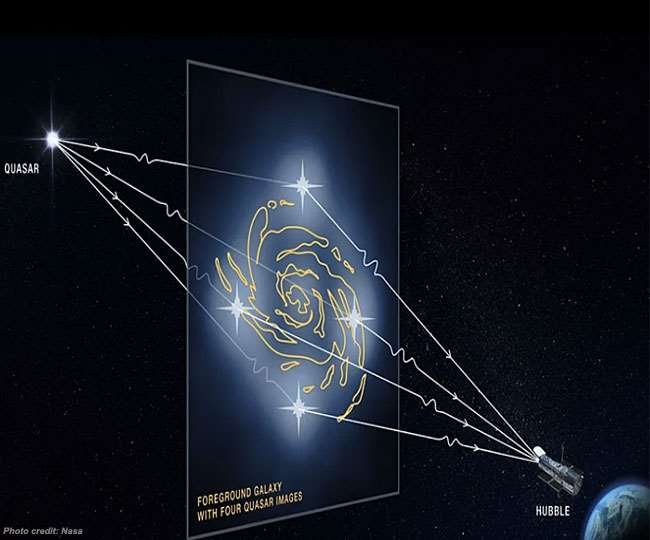
Nasa Hubble telescope detects smallest clumps of dark matter

Washington, Pret. The story of the origin and expansion of the universe has always thrilled everyone. Everyone’s curiosity is about how this universe came into existence and how it expanded. In this series, astronomers have now measured the exact rate of expansion of the universe with the help of the Hubble Space Telescope. To measure this, he used a technique quite different from that used previously.
Researchers point out that finding the exact rate of growth of the universe is very important for its age, size and future. He told that solving this mystery has been a big challenge in recent years. The findings of the research reinforce the worrying discrepancies between the growth rate and the projected growth rate from radiation in the early universe.
The growth rate of the universe is also called the Hubble constant, which is calculated by measuring the local universe. At the same time, the estimated rate of the early universe means the existence of galaxies and stars. The most recent value was extracted using the gravitational lensing method, the most accurate measurement yet. For this, the gravity of some important galaxy acts like a giant lens.
Study done like this
The traditional ‘cosmic distance ladder’ technique, using different types of stars as ‘milepost markers’, was not used to measure the exact distance from galaxies during the study. Researchers used the ‘agotic’ physics of gravitational lensing to measure the growth rate of the universe. Researchers derived the ‘HGROLICoW’ value of the Hubble constant through analysis of sophisticated techniques over two decades.
Data collected from Planck satellite
The researchers reported, ‘HGROLICOW’ and recent measurements suggest that rapid expansion rates in the local universe were estimated based on data gathered from the Planck satellite of the European Space Agency. It estimated how the universe behaved 13 billion years ago. The researchers pointed out that the difference between the two values is important for understanding the physical parameters contained in the universe. Also, new physics may be needed to understand this difference.
“If these results do not match, it may mean that we have not yet fully understood that the evolution of matter and energy,” said Sherry Suo, leader of the HGROLICOW team at Germany’s Max Planck Institute for Astrophysics. How did it happen. Especially in the early years.
